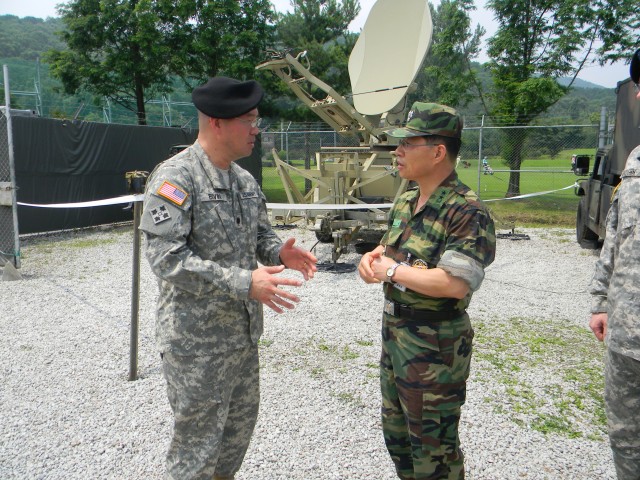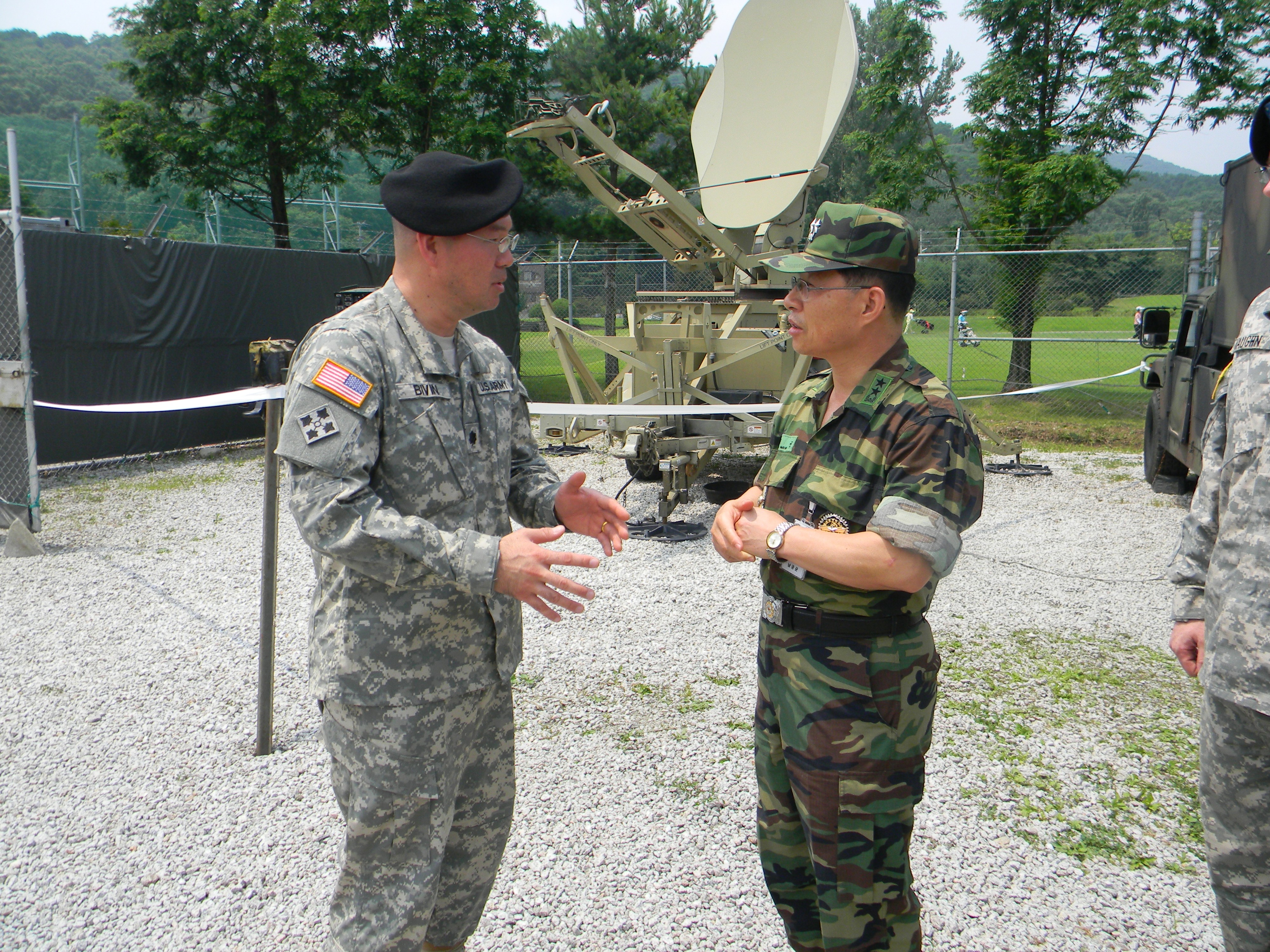
RED CLOUD GARRISON, South Korea - Republic of Korea Army Maj. Gen. Nam Gun-gyun and more than a dozen members of his ROKA staff visited Red Cloud Garrison July 8 to learn about the 2nd Infantry Division's signal capabilities.
The ROKA signal chief was given briefings about the division's signal operations on the peninsula and demonstrations of various signal equipment.
"The purpose of Gen. Nam's visit is build and maintain a signal alliance and partnership on the peninsula with the 2ID signal Soldiers and our ROK signal counterparts," said Lt. Col. Kim Bivin, chief of the 2nd Inf. Div. signal component. "We invited them here to answer their questions and show them how we operate."
Before the general and his staff moved to the demonstrations set up in the parking lot behind the Red Cloud Garrison Physical Fitness Center they received briefings about the division's signal mission, organization, footprint and other details about the systems and how it operates.
The signal component, known as G6 in the division, is responsible for planning, maintaining and defending 2nd Inf. Div. communications infrastructure to provide secure and non-secure voice, data and video services for all of its command posts and major subordinate commands, Bivin said.
Nam was also given a complete overview of the division's footprint on the peninsula to include the Casey/Hovey corridor, Red Cloud Garrison, Seoul, K-16 Air Base, Camp Eagle, Humphreys Garrison and Daegu Garrison. The nuts and bolts of the briefings and demonstrations covered the division level satellite network, Ku-band and extremely high frequency satellite communications, and High-Capacity Line-of-Sight systems.
The division's G6 has several forms of Line-of-Sight and Beyond Line-of-Sight transport available to make tactical communications possible for maneuver commanders. The Warfighter Information Network-Tactical is the primary means of communication, Bivin explained.
Different systems were set up so Nam and his staff could touch and get a real feel for the interoperability of both custom systems made especially for the U.S. Army and "off the shelf" systems such as the Combined Operational Very Small Aperture Terminal Network-Korea system.
Bivin said one of the major challenges facing the G6 is the lack of available bandwidth for Ku-band systems, which is a commercial system that requires significant funding each year to remain operational. The division's satellite terminals are Ka-band capable, but there is currently a no host nation agreement between the United States and the Republic of Korea to use it.
The ability to use Ka-band in Korea would allow the U.S. to transition from commercial satellites back to U.S. military-controlled satellite systems. Bivin said the transition would provide the 2nd Inf. Div. with more available bandwidth, thereby improving network performance and reducing operational costs.
"We are out here to demonstrate the COVN-K systems in different configurations," said Alan Zomchek, COVN-K network engineer.
"We are demonstrating two different antennae configurations, one being the Ground-to-Air Transmit and Receive or GATR, which folds down into a small package that weighs about 225 pounds with the outdoor and indoor equipment, versus the COVN-K that weighs in at 1,000 pounds of equipment. The GATR is transportable on commercial air and easy to move by helicopter and light aircraft."
This is the reason GATR is an unusual demonstration because it can be deployed in local network operations easily and effectively, Zomchek said.
"Although 2ID doesn't have the GATR in its inventory, it is available to them on a contingency basis," he said.
After gift presentations, Nam and Bivin retired to a discussion on the two systems and what the future of signal cooperation could bring to both military organizations.

Social Sharing